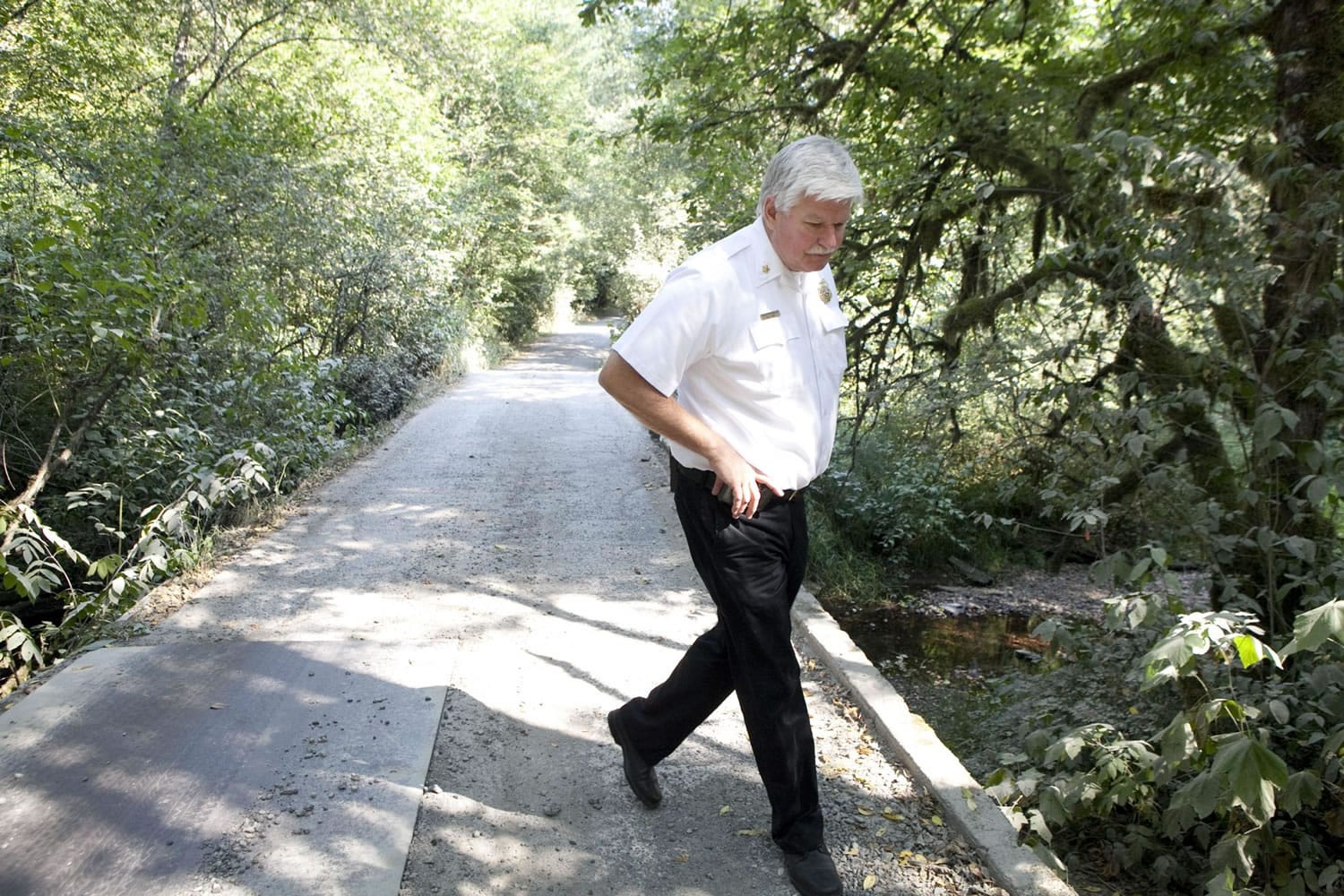4 to 7 p.m. Tuesday at Clark County Fire & Rescue, Station 26, 21609 N.E. 72nd Ave., Battle Ground.
4 to 7 p.m. Wednesday, Feb. 1, Yacolt Town Hall, 202 W. Cushman St., Yacolt.
4 to 7 p.m. Thursday, Feb. 9, East County Fire & Rescue, Station 91, 600 N.E. 267th Ave., Camas.
Public comments may be sent to: Carolyn Heniges, Clark County Public Works, PO Box 9810, Vancouver, WA 98666-9810 or carolyn.heniges@clark.wa.gov.
Clark County and local fire districts will host a series of open houses to provide updated information for homeowners who use privately owned bridges.
4 to 7 p.m. Tuesday at Clark County Fire & Rescue, Station 26, 21609 N.E. 72nd Ave., Battle Ground.
4 to 7 p.m. Wednesday, Feb. 1, Yacolt Town Hall, 202 W. Cushman St., Yacolt.
4 to 7 p.m. Thursday, Feb. 9, East County Fire & Rescue, Station 91, 600 N.E. 267th Ave., Camas.
Public comments may be sent to: Carolyn Heniges, Clark County Public Works, PO Box 9810, Vancouver, WA 98666-9810 or carolyn.heniges@clark.wa.gov.
The informal meetings will be in Battle Ground, Yacolt and Camas.
The county has an estimated 679 private bridges, a number calculated using mapping data showing the location of private driveways and roads crossing streams and other waterways. Property owners are encouraged to get existing bridges inspected by a qualified bridge engineer to establish the bridge’s load capacity. Costs would be shared among the homeowners.
Officials are concerned that some bridges aren’t sturdy enough to support a fire engine in the event of an emergency, said Carolyn Heniges, bridge program manager for Clark County Public Works.
If fire equipment cannot cross a private bridge, firefighters will still respond — even if it means running hoses for an extended distance, Heniges said.
The county has also drafted proposed standards for the construction of new private bridges. The standards are expected to make construction and repairs less costly than current federal standards, Heniges said.
For existing bridges, the proposed standards would apply only if additional homes are built or new lots are created, she said. Another option would be to install fire sprinklers in the new homes to avoid paying for bridge upgrades.
Last year, county commissioners were briefed on the problem: Fire districts say they won’t take their biggest vehicles across substandard private bridges, and there are property owners who may be unaware of the problem or those who don’t want to pay to fix it.
In 2010, a Cowlitz County jury ruled in favor of Cowlitz 2 Fire and Rescue, which was sued by a developer after it notified property owners it would not cross a private bridge. The bridge was made of two steel rail cars welded together, and an inspection showed it to be insufficient to handle the weight of a fire engine; bridges made from steel rail cars are commonly found in Clark County.
With backing from a majority of commissioners, staff started working on a new standard for private bridges.
Under the county proposal, private bridges would be inspected every five years and required to have a posted sign.
By comparison, bridges on public roads are inspected every two years. Load-limited bridges must have a posted sign to warn drivers.
Deputy Prosecutor Chris Horne told commissioners last year that for bridges built on lots that were subdivided prior to April 1993 — when the county enacted a large-lot ordinance — roads were exempt from standards.
Private roads can serve up to 50 homes in a rural area, up to 100 homes in an urban area, Horne said.
While some bridges are made from rail cars, some are made of logs and covered in gravel and were put in when the site was first logged, Horne said.
Under the state-mandated fire code, homes at least 150 feet from a fire hydrant have to have a fire apparatus road, Horne said. There are guidelines on height and width and weight capacity.
“If the road was never reviewed by the county, then we don’t even know where these bridges are,” Horne said.
Ultimately, the county would like an inventory of the bridges so 911 dispatchers could alert responders.
Chief Steve Wrightson of Clark County Fire District 3 in Hockinson said firefighters know where the trouble spots are in their areas.
Water tenders weigh 60,000 pounds and cost between $250,000 and $300,000 each.
Stephanie Rice: 360-735-4508 or stephanie.rice@columbian.com.



